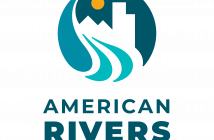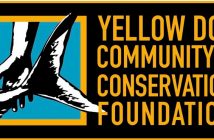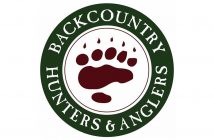A River Between Us, a documentary film produced by former Oregon State Senator Jason Atkinson, which brings to light a bitter, century-old, sociopolitical battle over water rights and the historic coalition that rose to end it, driving the largest conservation project in American history, debuts on iTunes Movies and Amazon Prime today, Atkinson said.
“We created this film to be a cinematic call to action on behalf of the largest restoration project in American history,” Atkinson said. “We’ve screened it at festivals throughout the West and beyond, and with this national release we can share the story with people who have never heard of the Klamath, and the racial healing, and give them a chance to do something big. The endgame is to provoke the White House into taking action to save it.”
Focused on the Klamath River Basin, which is comprised of nearly 16,000 square miles east of the Cascade Range stretching from southern Oregon well into northern California, A River Between Us captures the end of nearly a century of “water wars” in the region, wherein farmers, Native Tribes, local and regional industry, and environmental activists have been pitted against each other for rights to the Klamath River, which at one time was home to the third-largest salmon run on the West Coast.
“Water is the oil of our times,” Atkinson said. “A limited, precious natural resource. Sadly, the era of
water wars has just begun, particularly in the West.”
Since the first dam was built on the Klamath in 1918, the river and its surrounding communities have been embroiled in political struggles for water use, with PacifiCorp’s four dams at the center of the matter. In addition to the sociopolitical damage caused by their presence, the dams are responsible for a florescent green algae beds, dying fish, birds, and vast destruction of life and livelihoods—a situation entirely caused by the actions of humans.
“These dams provide no water for irrigation, and only one produces any significant energy,” Atkinson said. “Their primary purpose is symbolic. Some see them as signifying freedom and prosperity, but others think of them as representing poverty and demise. These opposing views have defined this controversy for generations.”
Atkinson and co-producer Jeff Martin, an award-winning documentary filmmaker (Lord, Save Us from Your Followers), shot the film over three years along the entire Klamath River, conducting 70 individual interviews throughout Oregon and California with farmers, who need the Klamath’s water for irrigation; Pacific Power, who manages the dams; the Klamath Basin Rangeland Trust, who problem-solve for water use; historic and modern fishermen; members of the Native Tribes who have lived and worked along the Klamath for centuries; federal, state and local politicians; and environmental advocates.
The coalition that comes together over the course of the film is made up of 42 different – many historically adversarial – organizations. But as the disparate groups put aside their differences to sign a landmark agreement of compromise, the collective movement begins an entirely new approach to conservation, one that views community as a crucial part of the natural habitat, where people are an extension of the river, rather than its controlling interest.
Well beyond a regional grassroots movement, Atkinson plans to use the film to raise awareness of this crisis for the purposes of starting a national dialog that will be heard from Requa, California, all the way to Washington, DC. “We wrote the story to be personal and engaging so that people who take a subway to work can connect to the people in the film. I didn’t want to preach to a choir, or play the political blame-game. This is a win for the entire country, a new path forward in racial reconciliation and conservation, and could be part of the President’s legacy,” Atkinson said.
For more information visit: http://ariverbetweenus.com.



